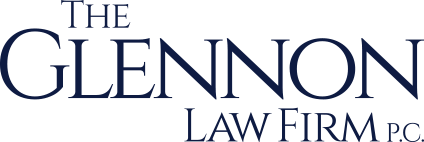Introduction
Litigation is the process of resolving legal disputes through government agencies and/or the court system. Whether you find yourself involved in a civil lawsuit or defending your rights, understanding the stages of litigation can empower you to navigate the legal process with confidence. In this blog post, we will explore the key stages of employment discrimination litigation, providing you with a broad overview of what to expect.
Before filing a lawsuit, it is advisable to consult with an attorney experienced in the relevant area of law. During this stage, your attorney will assess the merits of your case, review available evidence, and provide guidance on the potential outcomes and strategies. Pre-litigation may also involve sending demand letters or engaging in negotiations to resolve the dispute without formal legal action. It is important to note that many cases have a statute of limitations, which is a deadline by which a complaint must be filed. If a case is filed after this time, it may be dismissed.
Filing a Discrimination Charge: Initiating the Legal Process
The next step is that the party initiating the complaint (the plaintiff or complainant) files a discrimination charge detailing his or her claims to the New York State Division of Human Rights (DHR) or the Equal Employment Opportunity Commission (EEOC). The DHR is a state-level agency that enforces anti-discrimination laws within its jurisdiction. It investigates complaints, conducts hearings, and provides remedies for violations of New York State human rights laws. The EEOC is a federal agency responsible for enforcing federal anti-discrimination laws, particularly in the workplace. The EEOC investigates charges of discrimination, facilitates mediation, and litigates cases if necessary. The plaintiff files a complaint with either the DHR or the EEOC, depending on the circumstances. Filing in one agency automatically files you in the other agency as well, meaning that both your state and federal claims are considered.
Responding to the Complaint: Defending Against Allegations
The party against whom the claim was brought (the defendant or respondent) is then given a chance to respond. In the DHR there is a 15-day deadline to do so, in the EEOC there is usually a 30-day deadline to respond. The plaintiff has an opportunity to reply to the defendant’s response. Either agency will initiate an investigation into the claims. They may request additional information or conduct interviews with relevant parties. In some cases, the agency may offer mediation as an opportunity for both parties to resolve the issue without going to court. Mediation can be a valuable alternative to consider, as it can save time and costs associated with litigation.
Agency Investigation and Mediation: Seeking Resolution Outside of Court
The agencies will then determine, based on their investigation, whether there is a likelihood that the plaintiff faced discrimination. This is not necessarily determinative of whether the plaintiff will win at a trial or hearing, but it can certainly shift the landscape of negotiation settlements depending on the results. In the EEOC, if the agency finds there is probable cause that discrimination occurred, they will invite the parties to resolve the complaint through an informal process. If that falls through, either the EEOC or the plaintiff can file a lawsuit in court. In the DHR, if the agency finds there is probable cause that discrimination occurred, a plaintiff can choose to have a public hearing in front of an administrative law judge, or file in court.
Filing a Lawsuit: Escalating the Dispute to the Court System
It is important to remember that, even if the agencies find there is no reasonable or probable cause, the plaintiff can still file in the New York State Court system or federal court.
Should a plaintiff choose to file in court, the next stage of litigation begins. The plaintiff files a complaint reiterating the details of their claims and including the legal basis for their case. The defendant then has an opportunity to respond with an answer, either admitting or denying the allegations made in the complaint and laying out certain defenses. At this stage, the defendant can add counterclaims to the action. Filing the initial complaint and receiving an answer typically takes several weeks, but can be extended due to various factors, including court backlogs, requests from either counsel, or negotiations. Alternatively, the defendant can make a motion to dismiss and ask the court to dismiss the case based on legal grounds. However, the court is often hesitant to grant those motions at this stage of the litigation.
Discovery: Gathering Evidence and Exchanging Information
The next stage of litigation is generally discovery. This is a pretrial exchange of information. Both parties exchange information, gather evidence, and seek relevant facts to support their claims or defenses. It includes methods like interrogatories (written questions), requests for documents, depositions (transcribed interviews under oath), and, although rare, requests for admissions. Discovery can span several months or even years, depending on the complexity of the case and the amount of evidence involved.
Settlement Negotiations and Mediation: Pursuing Alternative Resolutions
The courts look favorably on settlement negotiations and mediation, and New York and federal courts require mediation during or after the discovery process. Mediation employs a neutral third party who facilitates communication and negotiation between the parties. There is no requirement that the parties settle during mediation, but often each party puts a number on the table.
Motion Practice: Requesting Court Actions through Litigation
Motions can be filed at different stages of the litigation process, and their resolution can take weeks or months, depending on the court's docket and the intricacy of the issues involved. Motion practice involves filing various motions to request specific actions from the court. Sometimes, after discovery parties file a motion for summary judgment, which seeks a judgment in favor of one party due to a lack of material facts in dispute.
Next, if all else fails, there are pretrial conferences. A pretrial conference is a meeting between the parties and the court to discuss the case's status, potential settlement, and streamline trial procedures. Motions in limine also filed at this point, which are motions filed to exclude or admit certain evidence at trial.
The Trial: Presenting the Case and Seeking Judgment
Finally, the much-anticipated trial. A trial involves presenting the case before a judge or jury, who will decide the outcome based on the evidence and arguments presented. The trial consists of opening statements, witness testimony, cross-examinations, presentation of evidence, closing arguments, and jury instructions. Each side will have the opportunity to present its case and challenge the opposing party’s arguments. Employment law claims are typically tried before a jury, but can be tried before only a judge, which is referred to as a bench trial.
A trial is not always the end. After the trial, there may be additional motions and appeals if one party is dissatisfied with the results. Additionally, parties may be required to take further action to enforce the court’s judgment and collect the awarded damages.
The stages of litigation are not merely a legal roadmap, but a guide that can provide you with a sense of control and preparedness during the legal process. So, arm yourself with knowledge, seek professional advice, and embark on your legal journey with confidence. Most importantly, clarify your goals at the beginning of the journey because, as we know from experience, a personal strategy wins every time.®
If you have questions about your Employment situation, please feel free to contact us here. We have many years of experience handling such matters and will be able to assist you in resolving the dispute.
To learn more about these topics, you may want to review our information provided on these pages: Employment Law, Wage and Hour Disputes, Discrimination, and Employee Rights.
You may learn more about us and how we operate by visiting these pages: About Us, What Sets Us Apart, and Learn More About Us.



